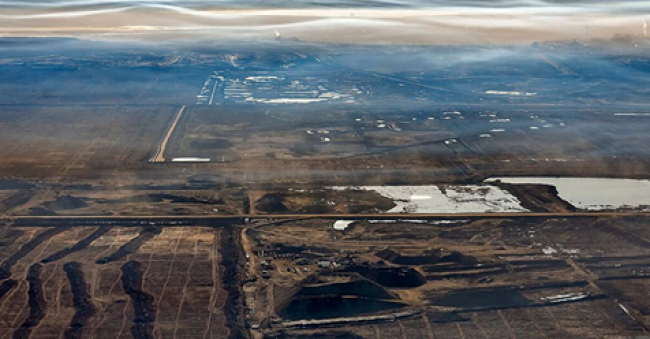Articles Menu

A primary lesson in political communications is that there is room in the public mind for only one big political news story at a time, and whoever drives that one big story wins twice: their story sets the headlines, and stories they don’t like are pushed to the margins.
Perhaps the biggest story getting marginalized in the pipeline debate is the looming cost of environmental clean up for Alberta’s oil industry. #bcpoli #cdnpoli
When Alberta premier Rachel Notley called a news conference this week to announce her NDP government is spending $1.4 million on billboards and other advertising to promote the Trans Mountain pipeline, she was driving the one big story the oil industry wants, and both she and the industry won. The industry’s story about the supposed benefits of the pipeline was the talk of the town and Rachel Notley got profile as their spokesperson.
Meanwhile, stories that neither industry nor Notley want in the public are kept in zones of silence at the margins. If these stories got the attention they deserve it could change the course of the pipeline debate.
The expanded Trans Mountain pipeline will carry diluted bitumen from open pit mines and underground operations in Alberta’s oil sands. Eventually these mines and operations must be cleaned up. Some of the largest and oldest tailings ponds, which are the size of lakes, are built on the banks of the Athabasca River. If they rupture the toxins will contaminate one of the world’s grandest and purest watersheds, the Mackenzie. The bitumen is dug from some of the biggest open pit mines on the planet and the region is laced with major industrial sites and pipelines that pose toxic hazards, all of which will need to be reclaimed.
In theory the companies that make these messes are responsible for cleaning them up. In practice the liability could ultimately be on taxpayers. In July 2015, Alberta’s Auditor General reported that the Alberta government is liable for up to $20 billion for cleaning up the oil sands mines alone. That is just the beginning. The Alberta Energy Regulator has internal estimates that the total cost of cleaning up all Alberta’s oil industry (conventional and oil sands) will run to $260 billion, which could crush the finances of Alberta’s government.
Another zone of silence surrounds the story of royalty rates. Under Canada’s constitution provincial governments own natural resources, and when they sell those resources they are paid royalties. Royalty rates are the product of negotiations between the seller --government-- and the buyer -- industry. The oil industry brings to the bargain vast amounts of capital, technical expertise, and organizational capacity. On its side, the Alberta government brings the bitumen; the water; the land; the highways, hospitals, universities, and schools that allow the work to happen; the rule of law; and vast amounts of its own research funding.
Guess who won the negotiation. In 2016, the five largest oil sands projects in the Ft McMurray region (Syncrude, two Suncor mines, Imperial Oil, and Cenovus) paid an average royalty of 1.4% of gross revenues. When I asked an energy economist if Alberta’s royalty rates were unusually low he replied, “You can’t get lower than these rates without giving it away for free.”
This means that for every thousand barrels of bitumen the government of Alberta brought to the table, the oil industry got the value from 986 of them and the people of Alberta got the value from fourteen of them. It’s little wonder the Alberta government has earned more in recent years from alcohol sales and gambling revenues than from bitumen royalties. Neither the Notley government nor the oil industry are advertising those numbers.
Royalty rates go up and down with oil prices; if oil hits $120 a barrel royalty rates reach nine percent, which would be a great deal of money, though rather less than the 91% the industry would be getting.
Another zone of silence concerns the destination of profits from the oil sands industry. Although some of the largest oil sands companies are headquartered in Canada, recent research indicates a majority of investors in the oil sands are foreign, which means a majority of the profits flow out of Canada to the US, China, and Europe. So the Notley government is pouring money into an advertising campaign that promotes a foreign-owned pipeline company that will ship raw bitumen gathered by foreign-owned corporations to sell for processing in foreign lands.
These are stories that should be brought from the margins into the headlines, from the zone of silence to the zone of public debate. That’s how healthy democracy works. The public has a right to hear them all because long after the last barrel has been shipped to distant lands and the last dividend paid to distant shareholders, the costs will ultimately be theirs.